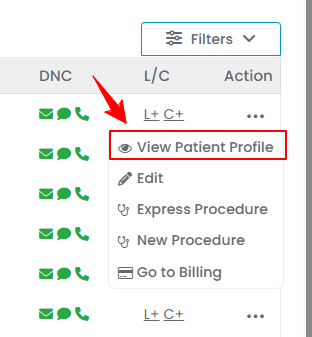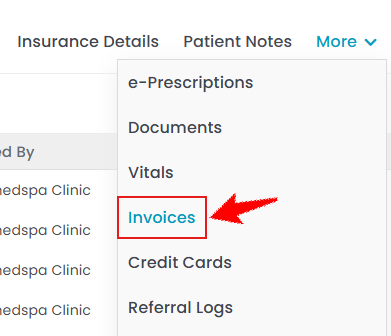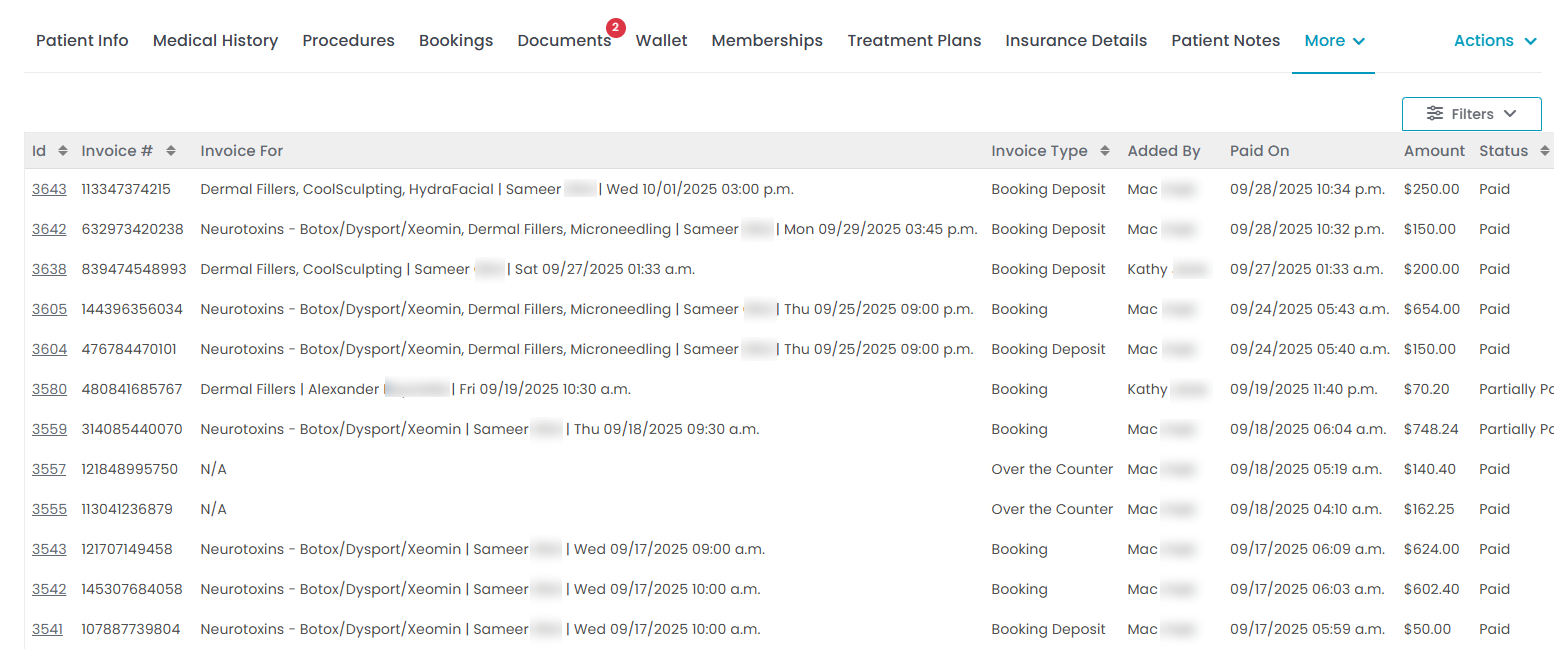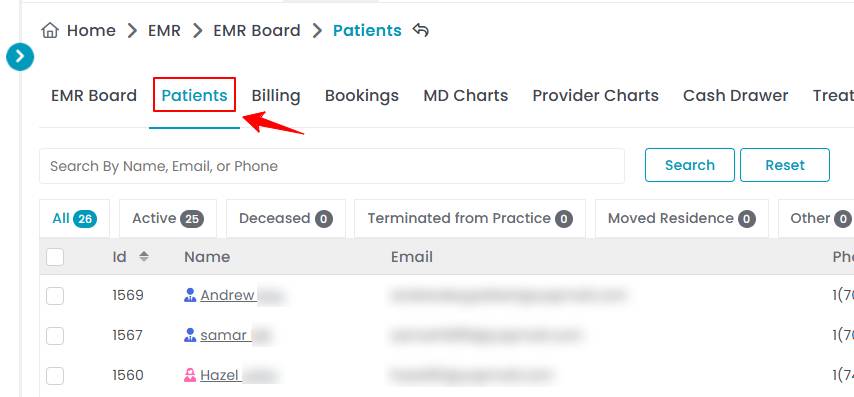Review Patient's Payment History
This user guide provides step-by-step instructions on accessing and analyzing a patient's past transactions, outstanding balances, and payment records. It helps users quickly access payment summaries, leading to better financial management.
Understanding Terminologies
Payment History
Payment history refers to a record of a patient’s past financial transactions, including payments made, due amounts, dates of transactions, and any outstanding balances. It is commonly used to assess financial responsibility and track billing activities.
Review Patient's Payment History
- A patient's review history can only be reviewed through the Patients List Screen, accessible via two entry points.
- From the patient list, click on three dots under the action column and select "View Patient Profile" for the specific patient.


- Users can view detailed patient information on the patient profile. Hover over "More" and click the "Invoices" tab.

 Note: An “Invoice” is a formal document provided to a patient that lists the medical services or products received, along with their costs, applicable taxes, payment terms, and the total amount due.
Note: An “Invoice” is a formal document provided to a patient that lists the medical services or products received, along with their costs, applicable taxes, payment terms, and the total amount due. - A list of invoices will be displayed, showing the patient's payment history, including invoice numbers and payment statuses.

 Note: You can view the patient’s payment history, but it cannot be edited to ensure accuracy and maintain financial record integrity.
Note: You can view the patient’s payment history, but it cannot be edited to ensure accuracy and maintain financial record integrity. - Click on any invoice in the list to view its details, including the Item Description, Quantity, Amount, Tax, Total and Pending Amounts, Discounts (if any), Type, Payment Mode, and Total Amount.Note: “Item Description” summarizes the product or service billed in the invoice. “Quantity” is the number of units of the item or service purchased. “Type” is the payment category, such as debit, full, partial, or installment. “Amount” is the cost of the item or service before taxes and discounts. “Tax” is an extra charge added to the cost of goods or services based on government rules. “Paid Amount” is the portion of the total amount that has been paid. “Pending Amount” is the remaining balance yet to be paid. “Discounts” (if any) are any reductions applied to the total cost. “Payment Mode” refers to the means used for payment, such as credit card, cash, or bank transfer.



